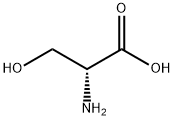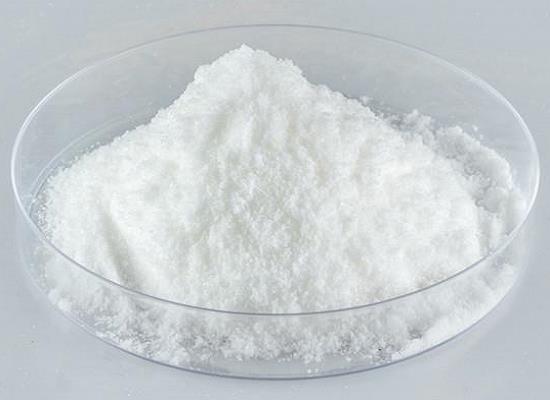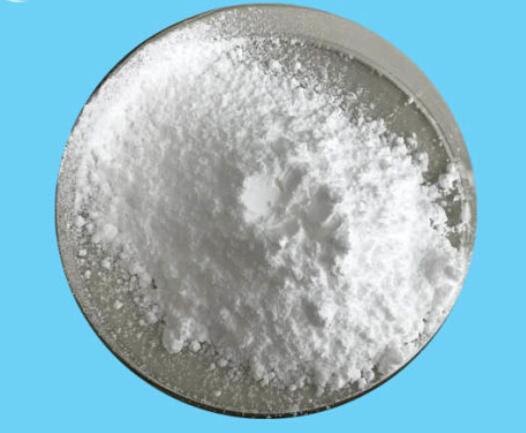D-Serine: a co-agonist of the N-methyl-D-aspartate (NMDA) receptor
D-Serine is an endogenous D-amino acid with the molecular formula C3H7NO3.Its average molecular weight is 105.0926 g/mol.D-Serine is located extracellularly in association with neurons.D-Serine is the dextro-isomer of the non-essential amino acid L-serine and is a coagonist of the N-methyl-D-aspartate (NMDA) receptor. It is formed by the conversion of L-serine by the enzyme serine racemase and is found mainly in the brain. D-Serine binds to the glycine site of the NMDA receptor, which is an amino acid that plays a role in cognitive enhancement and treatment of schizophrenia, and in recent years it has been found to have some therapeutic effects on depression[1].
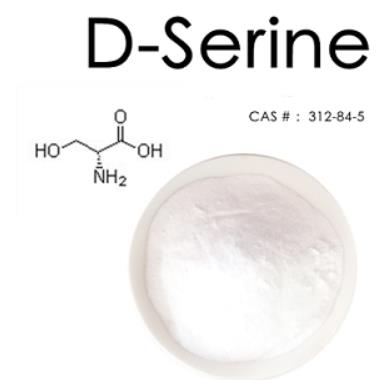
Figure 1.D-Serine
Pharmacological effects
1, D-Serine can reduce symptoms of cognitive decline[1].
2, D-Serine can reduce symptoms of disorders characterised by reduced N-methyl-D-aspartate (NMDA) signalling, including cocaine dependence and schizophrenia[1,2].
3, Treatment of depression[3].
In recent years the pathophysiological mechanism of the excitatory glutamate transmitter system of the reward loop in the brain is becoming a hotspot in depression research, N-methyl-D-aspartate (NMDA) receptors within the reward loop are involved in the pathogenesis of depression, D-serine as an endogenous co agonist of the NMDA receptor is being investigated in depression, and D-serine may be a potentially important drug.
Mechanism of action
Current research has found that D-Serines close association with NMDA receptors is the main reason for its ability to treat cognitive decline, depression and schizophrenia:
Glutaminergic signalling is known to enhance memory formation as activation of NMDA receptors causes calcium inward flow and mobilisation of calmodulin-dependent kinase (CaMK) and CREB-binding proteins, which act to induce long time-range potentiation (LTP), the formation of the mechanistic basis of what has been termed memory, and leads to an increase in NMDA signalling (particularly via the NR2B subunit) causing memory and an increase in LTP[4]. This is also the mechanism of memory enhancement observed with magnesium L-threonate. Due to the ability of D-serine to enhance signalling through NMDA receptors (52+/-16% enhancement at 1 μM with an increase in activity up to 30 μM), the pairing of D-serine viability with this process and the known sensitivity of hippocampal cells to D-serine stimulation, it is thought that supplementation with D-serine may promote memory and learning. By affecting NMDA glycine binding sites and therefore positively regulating signalling via NDMA receptors, D-serine is thought to reduce symptoms of schizophrenia[5].
Absorption, Distribution, Metabolism, and Excretion
In the human body, D-Serine is mainly cleaved by D- amino acid oxidase (DAO). It finally generates hydroxypyruvate (HPA) and ammonia (NH3), and HPA can be metabolised by glyoxylate reductase/hydroxypyruvate reductase (GRHPR) to generate D-glycerate3-phosphate, which is finally xenografted to glucose[6].
Levels of D-Serine in human tissues are tightly regulated by achieving a balance between its synthesis, degradation, absorption and/or transport. As with most amino acids, when foods containing D-Serine are consumed, this molecule is extracted from the small intestine and absorbed into the bloodstream. It crosses the blood-brain barrier and enters neurons where it is metabolised into glycine and many other molecules[7]. The amount of D-Serine in a cell is therefore regulated by these metabolic processes. If too little is ingested, more D-Serine is converted from various sources. When too much is ingested, only a portion is converted to glycine, while the rest is metabolised to folate and many other proteins[8,9].
Exogenous D-Serine enters the body through food. Fruits (dragon fruit, lychee, mango, pineapple, guava, bananas, coconut, apples and pears), legumes, vegetables (olives, avocado, tomatoes and aubergines)[9].
Synthesis
The most important source of D-serine, which is known to be obtained by humans through biosynthesis, protein metabolism, eating, and the breakdown of food by intestinal bacteria, is the biosynthesis of D-serine. The main source of D-serine in the body is the racemic conversion of L-serine by the enzyme serine racemase (SR).
References
[1]Radzishevsky I, Sason H, Wolosker H. D-serine: physiology and pathology.Curr Opin Clin Nutr Metab Care. 2013;16(1):72-75. doi:10.1097/MCO.0b013e32835a3466
[2]Wolosker H, Balu DT. D-Serine as the gatekeeper of NMDA receptor activity: implications for the pharmacologic management of anxiety disorders.Transl Psychiatry. 2020;10(1):184. Published 2020 Jun 9. doi:10.1038/s41398-020-00870-x
[3]MacKay MB, Kravtsenyuk M, Thomas R, Mitchell ND, Dursun SM, Baker GB. D-Serine: Potential Therapeutic Agent and/or Biomarker in Schizophrenia and Depression?.Front Psychiatry. 2019;10:25. Published 2019 Feb 6. doi:10.3389/fpsyt.2019.00025
[4]Sacchi S, Novellis V, Paolone G, et al. Olanzapine, but not clozapine, increases glutamate release in the prefrontal cortex of freely moving mice by inhibiting D-aspartate oxidase activity.Sci Rep. 2017;7:46288. Published 2017 Apr10. doi:10.1038/srep46288
[5]Coyle JT, Balu D, Wolosker H. D-Serine, the Shape-Shifting NMDA Receptor Co-agonist.Neurochem Res. 2020;45(6):1344-1353. doi:10.1007/s11064-020-03014-1
[6]Nunes EA, MacKenzie EM, Rossolatos D, Perez-Parada J, Baker GB, Dursun SM. D-serine and schizophrenia: an update.Expert Rev Neurother. 2012;12(7):801-812. doi:10.1586/ern.12.65
[7]Bardaweel SK, Alzweiri M, Ishaqat AA. D-Serine in neurobiology: CNS neurotransmission and neuromodulation.Can J Neurol Sci. 2014;41(2):164-176. doi:10.1017/s031716710001653x
[8]Labrie V, Wong AH, Roder JC. Contributions of the D-serine pathway to schizophrenia.Neuropharmacology. 2012;62(3):1484-1503. doi:10.1016/j.neuropharm.2011.01.030
[9]Nasyrova RF, Khasanova AK, Altynbekov KS, Asadullin AR, Markina EA, Gayduk AJ, Shipulin GA, Petrova MM, Shnayder NA. The Role of D-Serine and D-Aspartate in the Pathogenesis and Therapy of Treatment-Resistant Schizophrenia. Nutrients. 2022 Dec 2;14(23):5142. doi: 10.3390/nu14235142. PMID: 36501171; PMCID: PMC9736950.
Related articles And Qustion
See also
Lastest Price from D-Serine manufacturers

US $0.00/Kg/Drum2025-04-21
- CAS:
- 312-84-5
- Min. Order:
- 1KG
- Purity:
- 98%min
- Supply Ability:
- 1000kg
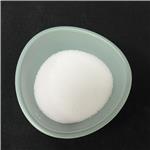
US $10.00/KG2025-04-21
- CAS:
- 312-84-5
- Min. Order:
- 1KG
- Purity:
- 99%
- Supply Ability:
- 10 mt
